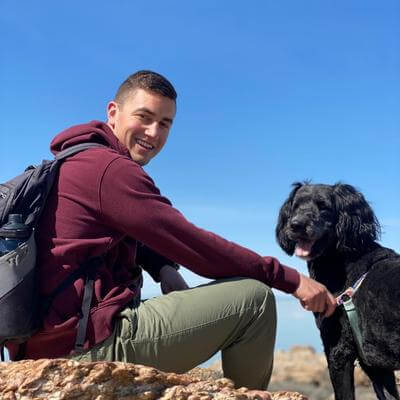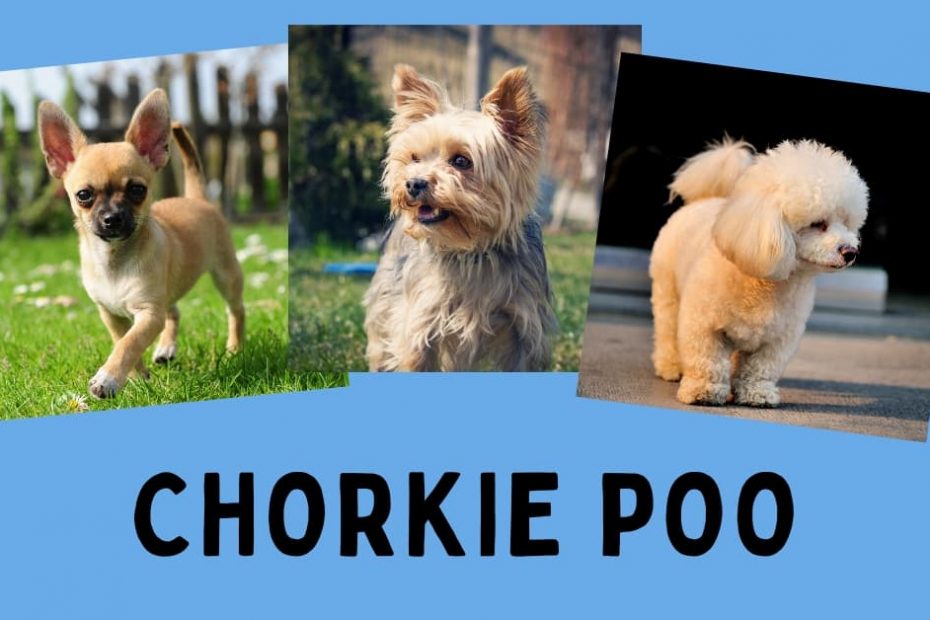After first hearing the name Chorkie Poo, you may have laughed. I know I did. It’s probably my favorite name for a Doodle breed.
However, I realize that Chihuahuas, Yorkies, and Toy Poodles are all popular companion dogs. They are small, smart, and full of sass. So what do you get when you mix all three?
You get the Chorkie Poo!
In this article, you’ll learn that there is a lot to love about the Chorkie Poo. Check it out.
What is a Chorkie Poo?
A Chorkie Poo is a mix between a Chihuahua, Yorkshire Terrier, and Toy Poodle. It is a Toy-sized Doodle breed.
Chihuahuas, Poodles, and Yorkshire Terriers are often mixed with other dog breeds to create new designer breeds with great qualities. There are a few mixes worth pointing out.
- Chorkie: The result of breeding a Chihuahua with a Yorkshire Terrier.
- Chi-Poo: The result of mixing a Chihuahua and a Poodle.
- Yorkipoo: The result of crossing a Poodle with a Yorkshire Terrier.
There is no set breed standard for a Chorkie Poo. As long as the dog has all three parent breeds in its ancestry, it can be called a Chorkie Poo.
Below are the breed combinations to get a Chorkie Poo:
- Chi-Poo and a Yorkie,
- Chorkie and a Poodle, or
- Yorkipoo and a Chihuahua
Due to the size of the Chihuahua and Yorkie, Mini and Toy Poodles are used for breeding.
While talking to breeders, you may hear this particular breed referred to as a Chorkie Doodle, a Chorkie-Poo, a Chorkipoo, or a Yorkie Chi-Poo.
To gain better insight into this mixed breed, we can look at the history and background of the three parent breeds.
History of the Parent Breeds
Beloved is the word that best describes Chihuahuas, Poodles, and Yorkies. You’ll love them even more after you hear about their respective backgrounds.
Chihuahua
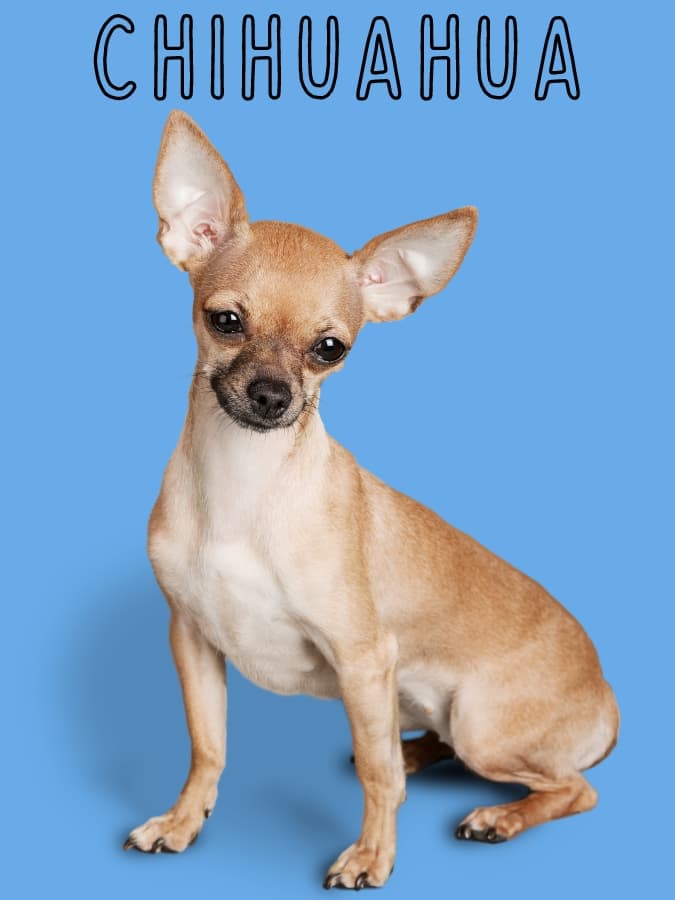
To learn more about the history of the Chihuahua, we need to go back to the age of the Aztecs [1]akc.org/expert-advice/dog-breeds/chihuahua-history-aztec-companion. Chihuahuas were immensely popular among the nobles of that era, and many believed that they served an essential purpose as spiritual guide dogs.
Although they primarily began as pets of the nobles, the charms of the Chihuahua proved irresistible. More and more people without noble lineages sought these dogs, and they soon became household pets.
Eventually, Chihuahuas would make their way from Latin America to the United States. They became more popular in the United States during the latter part of the 1800s, and it didn’t take long for Chihuahuas to develop a dedicated following.
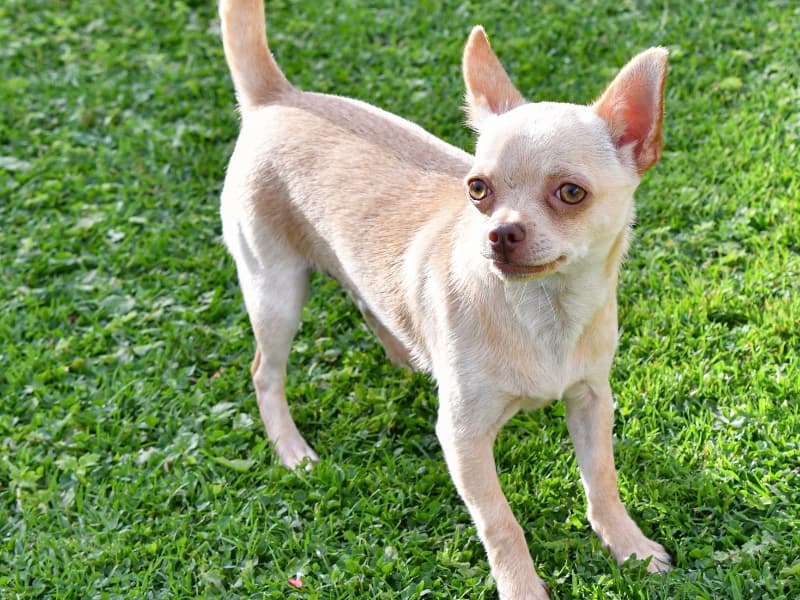
Notably, both the long and smooth-haired varieties of the Chihuahua made their way here. Early on, most Chihuahuas that made their way stateside had long coats. These days, you are more likely to see Chihuahuas with smooth coats kept as pets.
Yorkshire Terrier
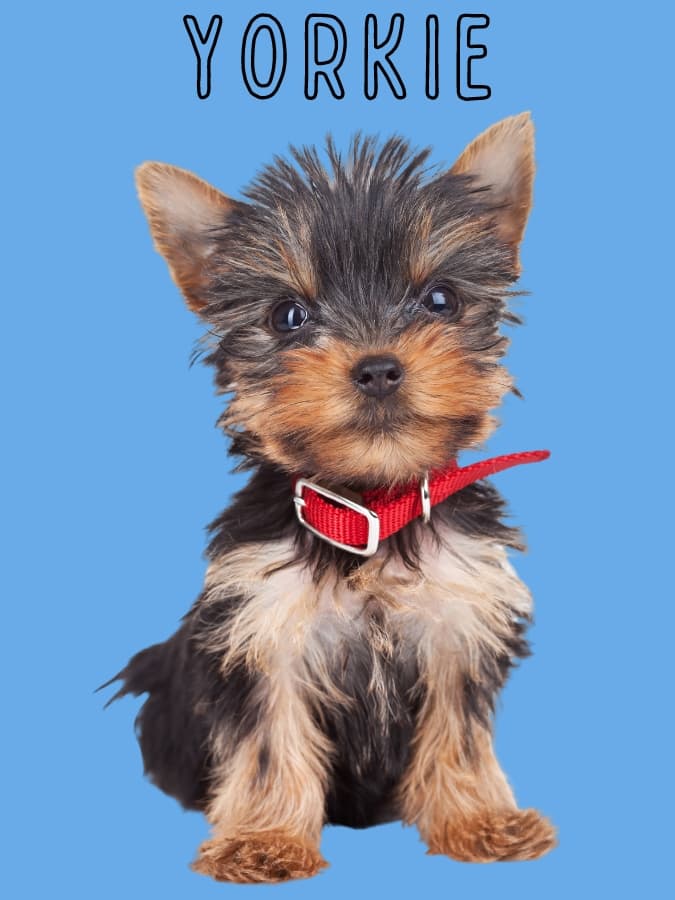
The breed we know today as the Yorkshire Terrier has a lineage that can be traced back to the 1870s. The Yorkshire Terrier breed was originally recognized as such back in 1874, but they first came around four years earlier.
Back then, they were first known as Broken Haired Scotch Terriers or Toy Terriers [2]theyorkshireterrierclubofamerica.org.
Many aristocrats of the Victorian Era also adored Yorkshire Terriers. Their association with the nobles of that time helped shape their image as pets associated with luxury. Even today, that reputation of the Yorkie persists.
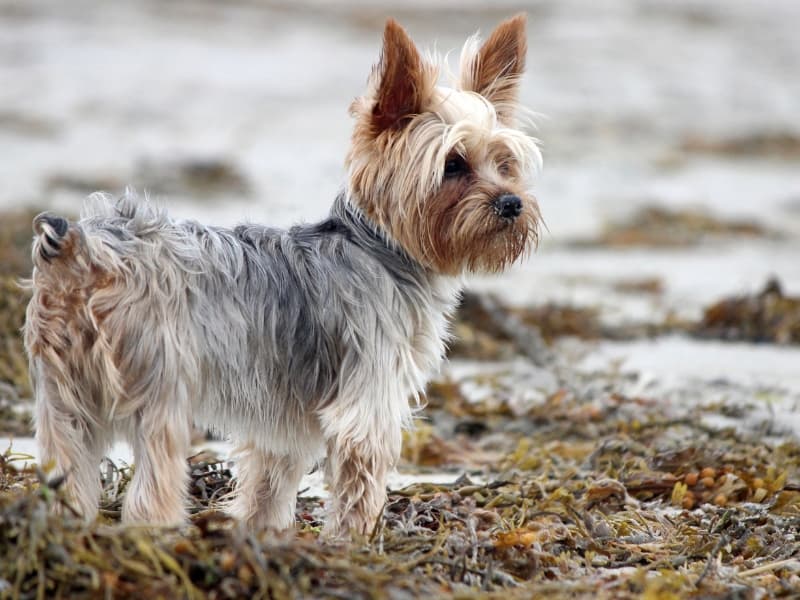
Although the Yorkshire Terriers of today have a reputation for being pampered lapdogs, these dogs are not averse to getting their noses dirty. Back in the day, Yorkies were tasked with tracking down rats living in sewers and other underground passageways [3]akc.org/expert-advice/dog-breeds/6-things-about-yorkshire-terriers.
Yorkies can use their compact yet agile bodies to track down prey effectively, so they were always likely to excel when given that kind of role.
The Yorkshire Terrier’s popularity also grew, largely thanks to how comfortable they are in urban environments. The sights and sounds of the big cities do little to spook these dogs.
Poodle
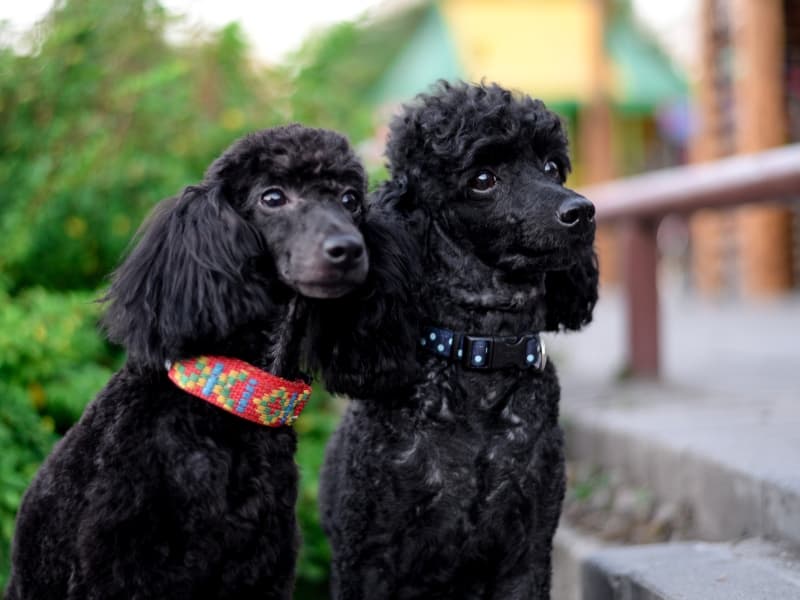
When you think of Poodles, you tend to associate them with the people of France. The association is a natural one to make since the Poodle is France’s national dog.
Interestingly, the Poodle’s roots cannot be found in France. Take a look at historical records, and you’ll find that the early ancestors of Poodles were found in Rome. As for the Poodle that we know and love today, that breed is of German descent [4]ukcdogs.com/standard-poodle.
Of course, we still need to credit the French for making the Poodle as popular as it is.
Similar to the other breeds we’ve already discussed in this article, the Poodle is known for being a pet of nobility. However, its background is far from glamorous. Originally, these dogs were bred to be hunting companions [5]akc.org/expert-advice/lifestyle/10-facts-about-poodles.
They excelled at retrieving the waterfowl their owners gunned down because of their excellent skill in water.
The Poodle first made its way to the United States near the tail end of the 1800s, but it wouldn’t reach the height of its popularity until after World War II.
During that time, people fell head over heels for Poodles, and they would become the most popular breed in the country for over two decades [6]ukcdogs.com/standard-poodle.
Mini Poodles are smaller variations of the standard breed. They grow to no taller than 15 inches at their shoulders as adults.
Toy Poodle
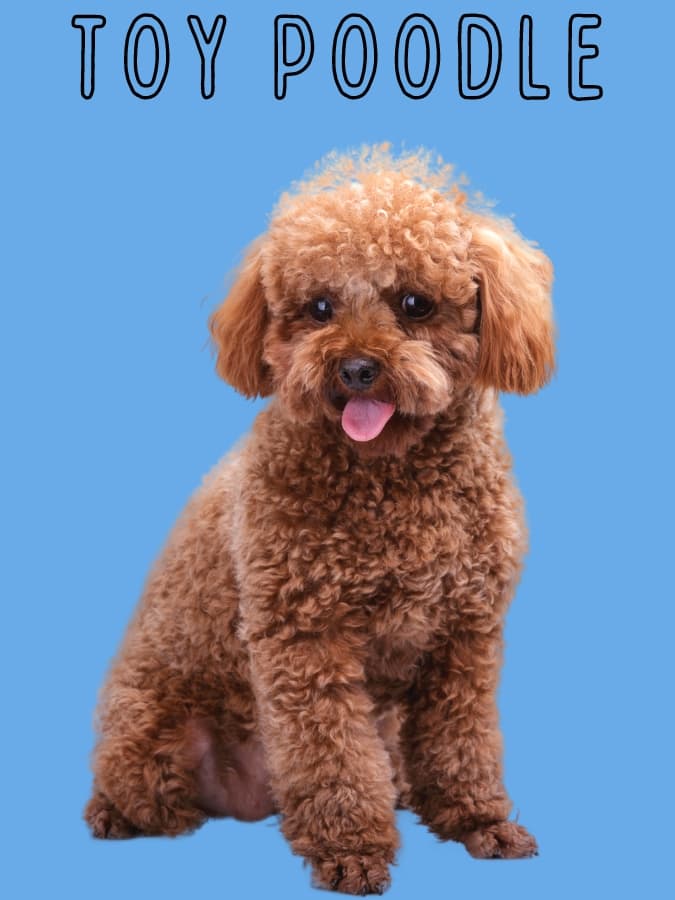
We also need to mention some of the variations of the Poodle breed that have become en vogue. The Toy Poodle is one we specifically want to highlight.
The Standard Poodle was bred down in size to create smaller variants of the breed. Toy Poodles are the smallest size. Even as adults, they measure no higher than 10 inches at their shoulders.
Perfect for city-dwellers, or for families looking for a small dog, the Toy Poodle has all the same excellent traits as the Standard but just in a tinier, cuter package.
Appearance
Now that we know more about the respective histories of the Chorkie Poo’s parents let’s focus more on this hybrid breed itself. We can start by talking more about its appearance.
Coat Type
Chorkie Poos can have short, medium, or long coats. In terms of the coat’s texture, it takes more after Yorkies because it has a slightly curly coat. Brush that curly coat daily to keep it in the best condition possible.
Coat Colors
Coat colors for Chorkipoos can be remarkably varied. The large array of colors comes from the three parent breeds. Single-color coat variations include:
- apricot
- black
- blue
- brown
- café au lait
- chocolate
- cream
- fawn
- gold
- grey
- liver
- red
- silver
- white
It’s also fairly common for Chorkie Poos to have coats that feature two primary colors. They may have unique patterns such as merle, brindle, parti, phantom, or tuxedo.
Size
Chorkie Poos are small dogs like their parents, but how small are they? You can learn more about their height and weight below.
Height
The average height for a fully-grown male Chorkie Poo is 9 to 10 inches at the shoulders. Its female counterpart can reach 8 to 9 inches in height.
As you can see from those measurements, Yorkie Chi-Poos are just a bit smaller on average compared to Toy Poodles.
If you’re eager to find out how tall your pet will probably be, you can take the height measurements of their parents prior to breeding. Refer to those measurements to get an idea of how tall your pet will likely become.
Weight
Male Chorkie Poos will tip the scales at 5 to 10 pounds as adults. If you have a female Chorkie Poo, her healthy adult weight is around 4 to 8 pounds.
Chorkie Doodles are great companions because you can carry them around anywhere. They can sleep on your lap for hours without causing you any discomfort.
Traits & Characteristics

What is a Chihuahua-Yorkie-Poodle mix like?
What can you expect from a Chorkie-Poo if you keep one as a family pet? Will it be a positive addition to your household, or could it be more trouble than it’s worth?
In all likelihood, your young Chorkie Poo will be a terrific family pet.
Chorkie Poos are better around children than Chihuahuas due to the traits of the Poodle and Yorkie breeds. They exhibit great patience and understand how to play around without getting too rough.
When they’re in the company of family, Chorkie Poos are affectionate and energetic. Engaging them in playtime is easy, and they can go for a while. Regular walks are also a must with this hybrid breed.
They have a tougher time around other dogs but don’t display aggression often. They are highly receptive to training, so you can address that quirk over time.
Common Health Issues
Your main areas of concern as a Chorkie Poo owner should be your pet’s kneecaps and eyes. These hybrid dogs are susceptible to conditions affecting those parts of the body, so regular check-ups are recommended.
Heading in for heart exams every now and then is also a good idea. Chorkie Poos may inherit heart issues from their Chihuahua parents, so it’s best to check on that as soon as possible.
Lifespan
The average lifespan for a Chorkie Poo is 13 to 14 years. It has an above-average lifespan relative to other dogs, making it even better suited as a family pet.
Final Thoughts
The Chorkie Poo is an adorable hybrid breed that can fit into just about any household. It’s a dog that many owners cannot help but pamper, and it reciprocates that love by being very affectionate. Families looking for a smaller pet will absolutely adore the Chorkie Poo.
Check these posts out!
If you like the Chorkie Poo, I think you should check out these pups too:
- Toy Foodle (Toy Fox Terrier x Toy Poodle)
- Teddy Poo (Bichon Frise x Shih Tzu x Poodle)
- Malchipoo (Maltese x Chihuahua x Poodle)
- Malshipoo (Maltese x Shih Tzu x Poodle)
